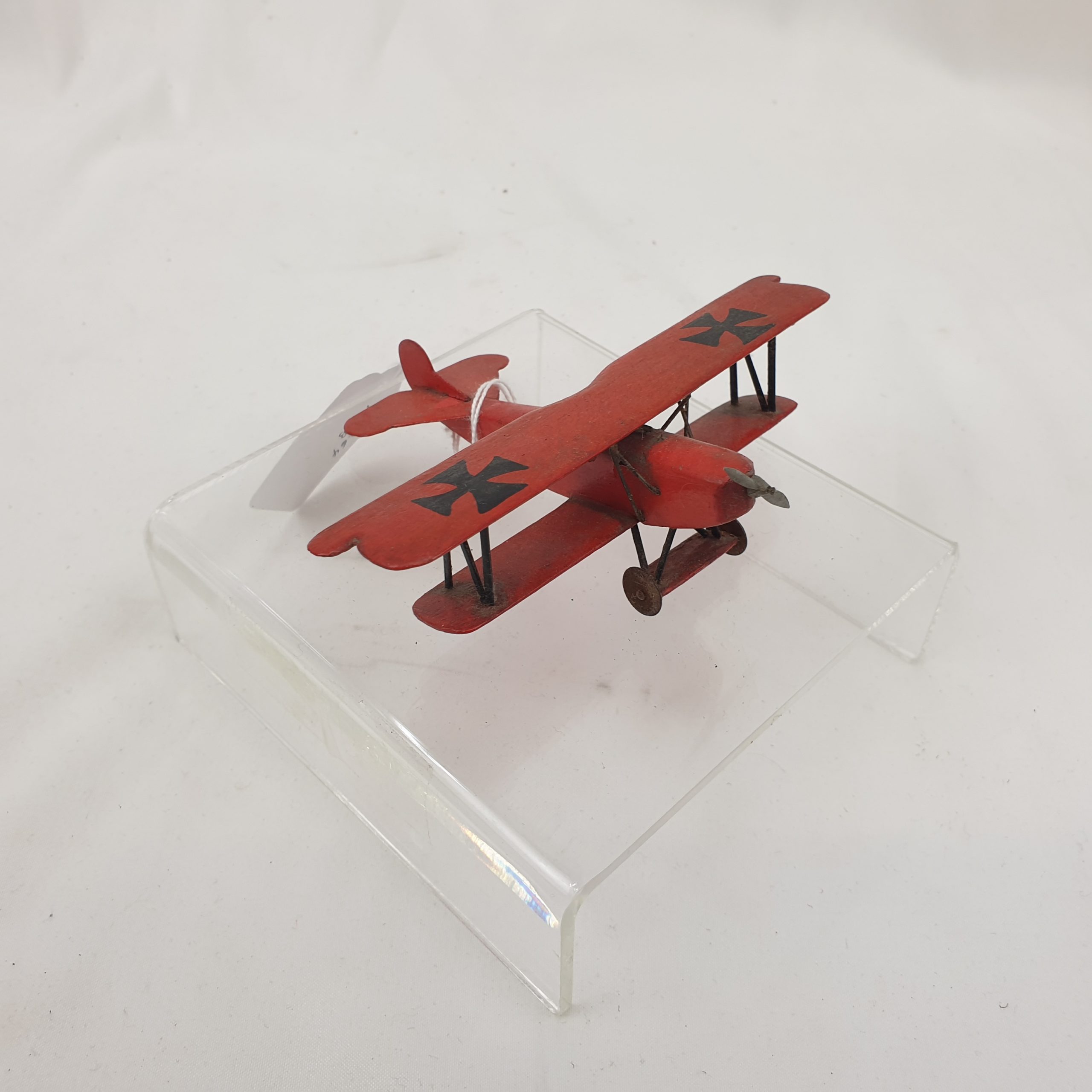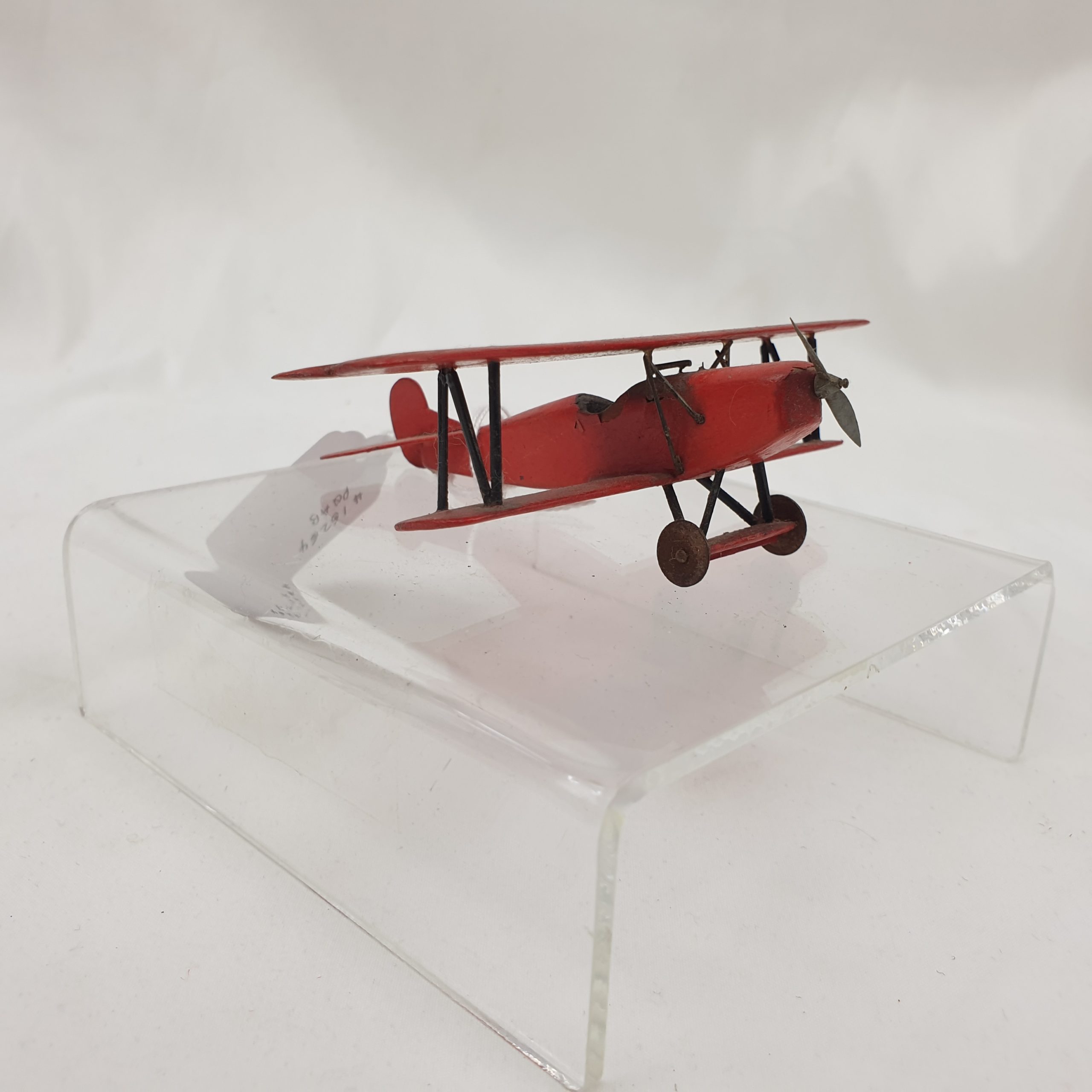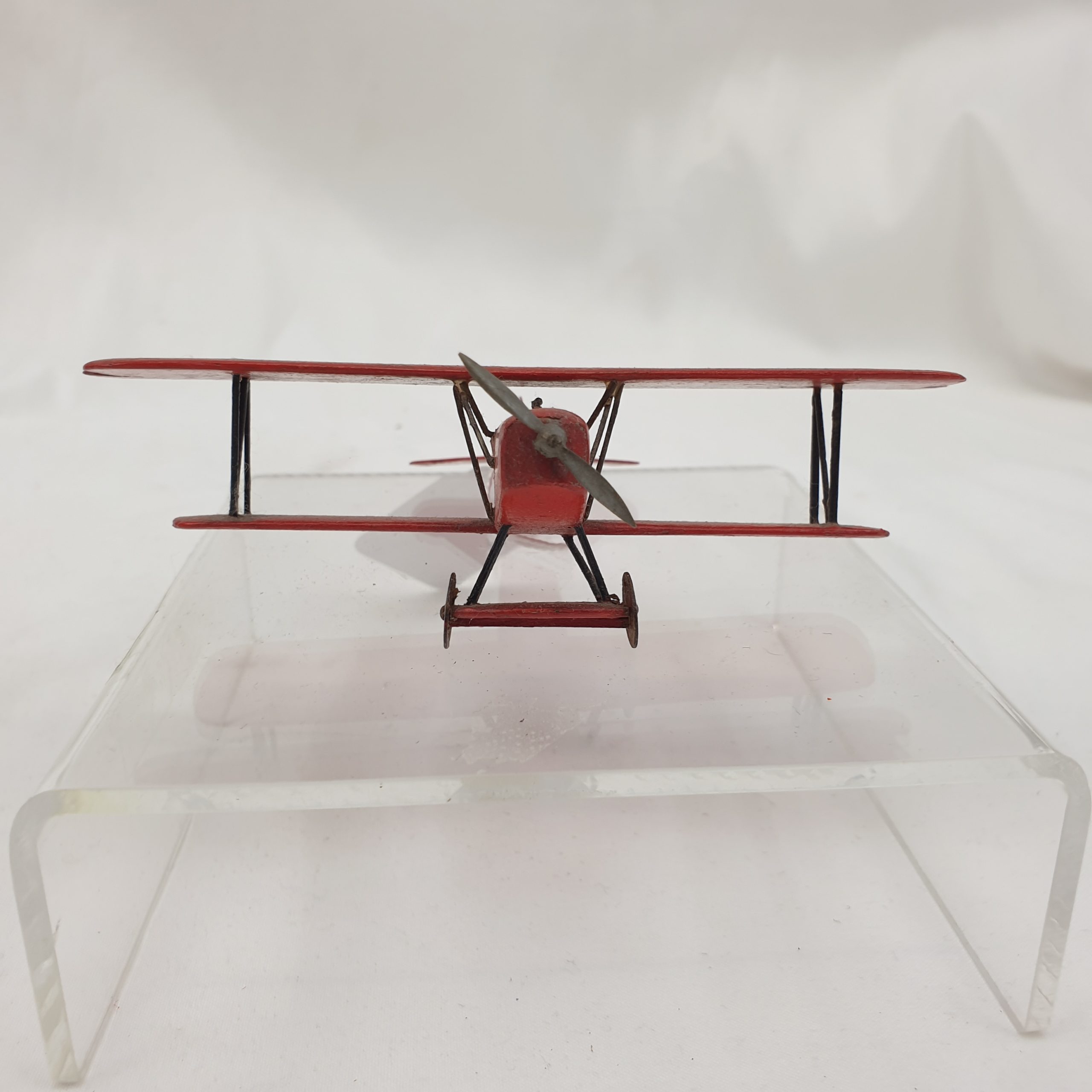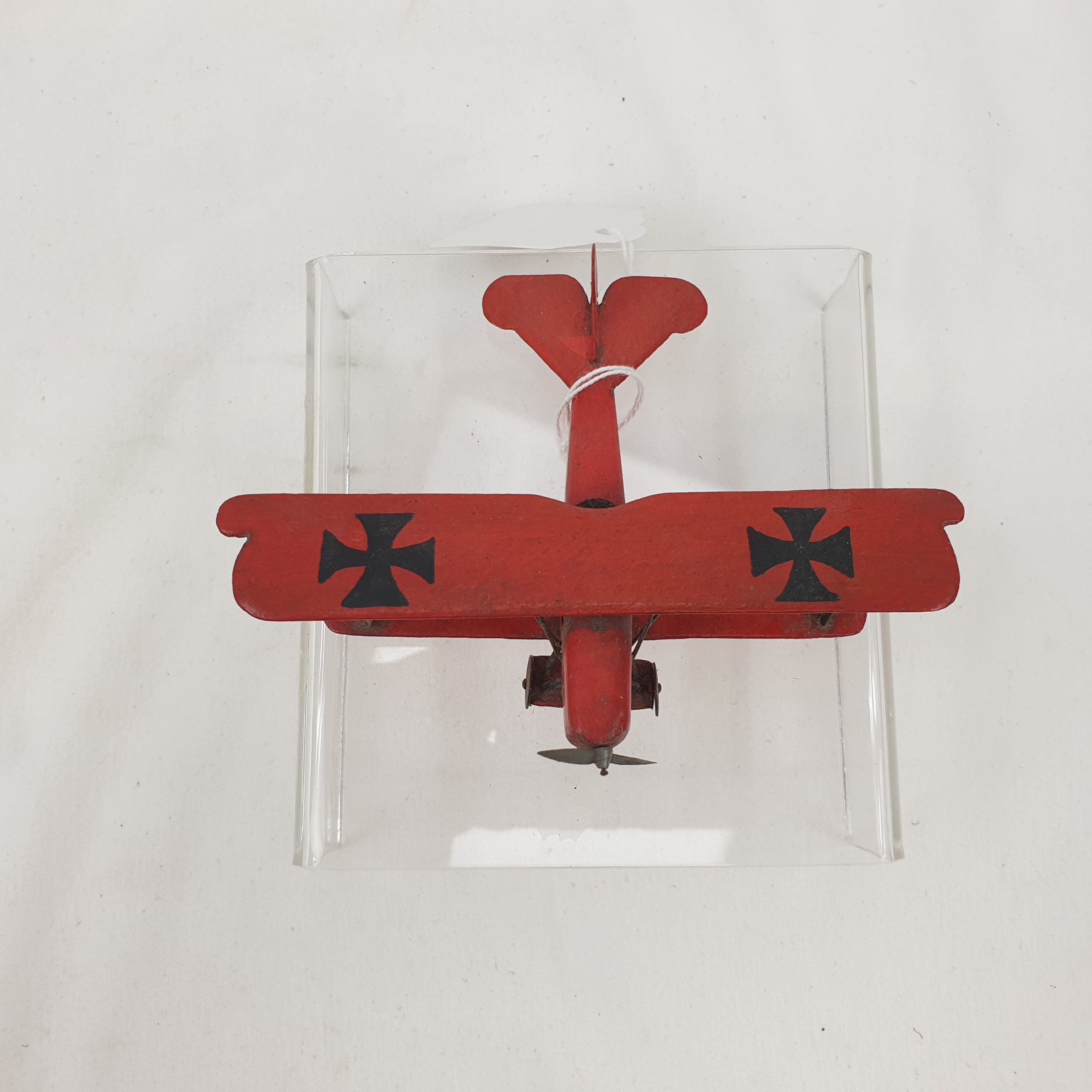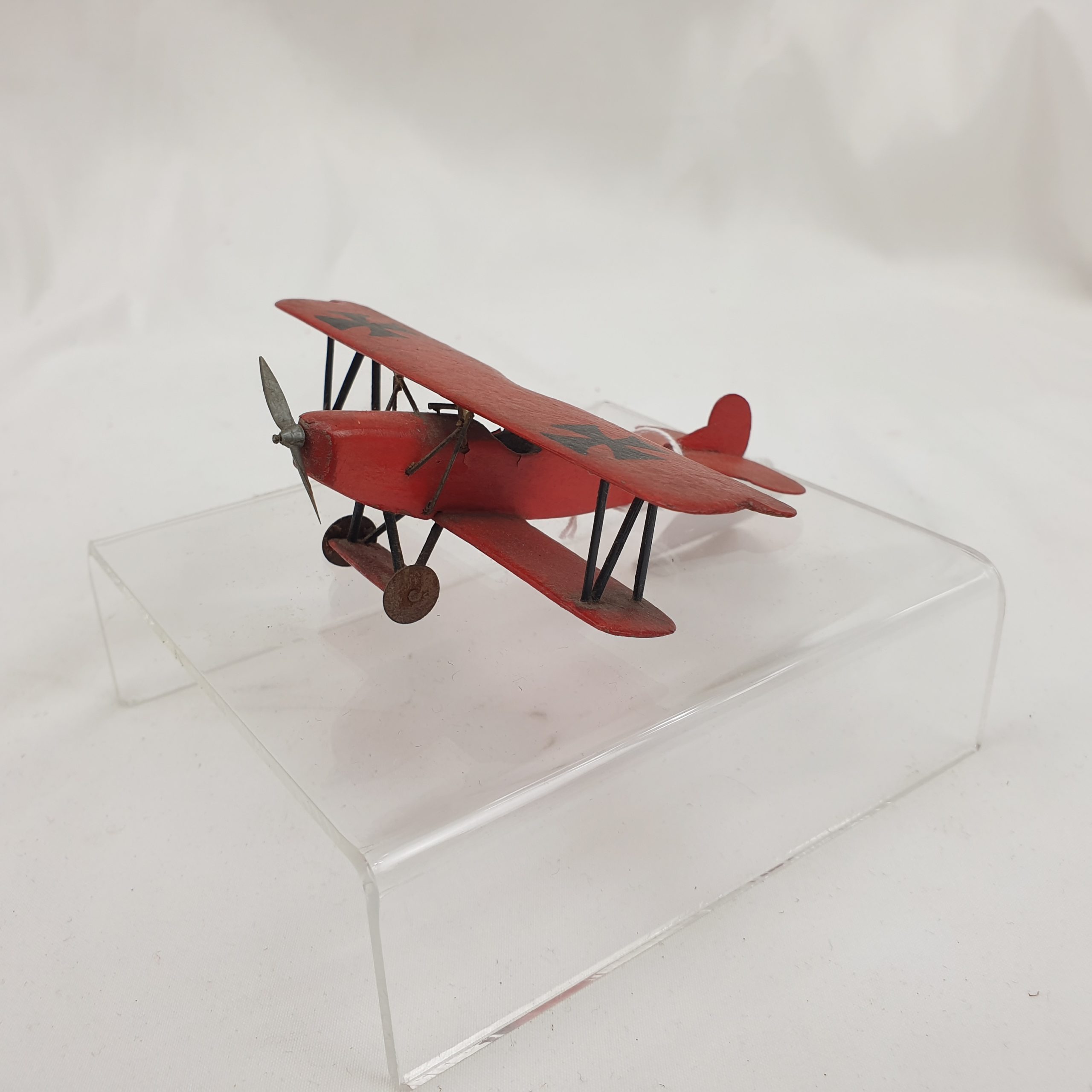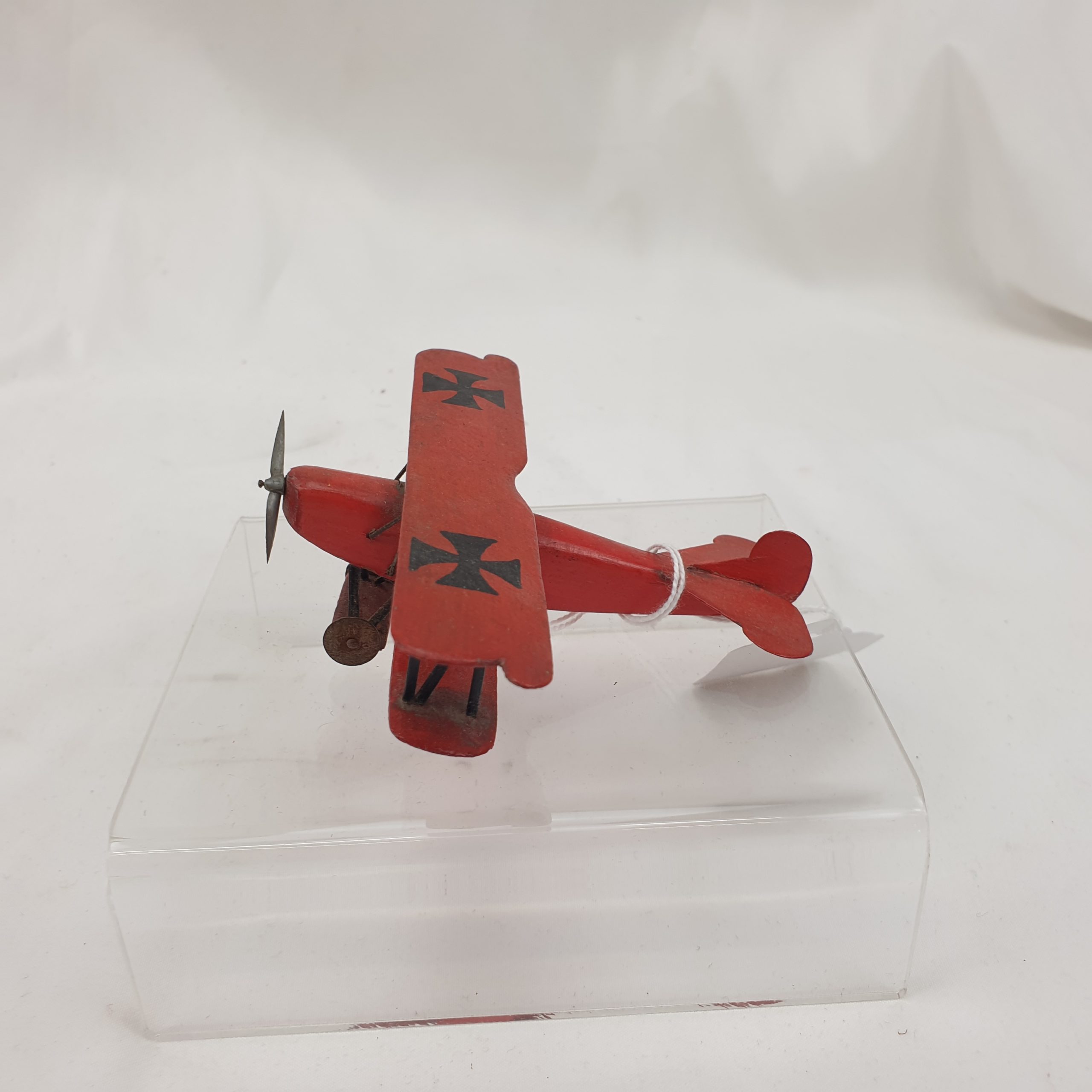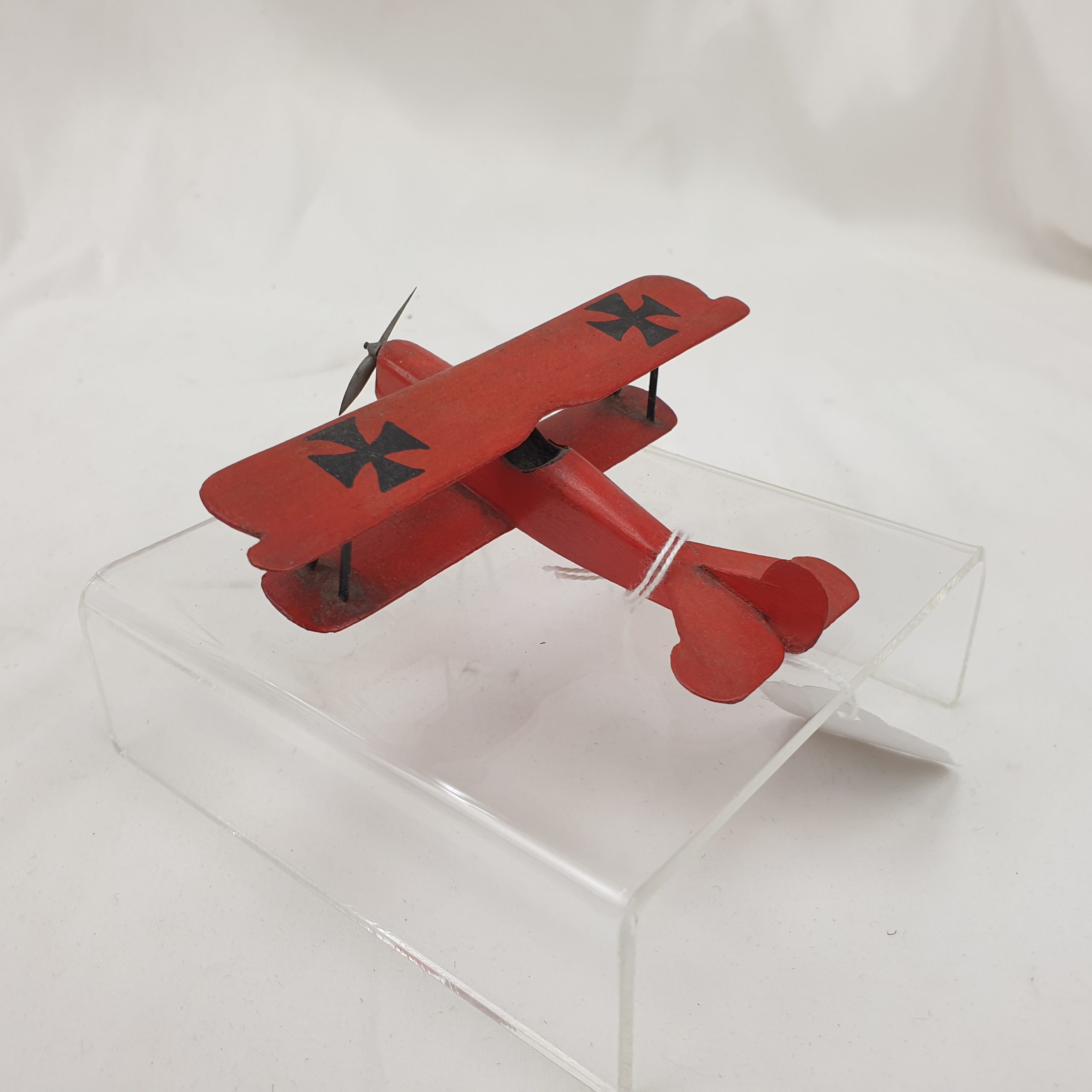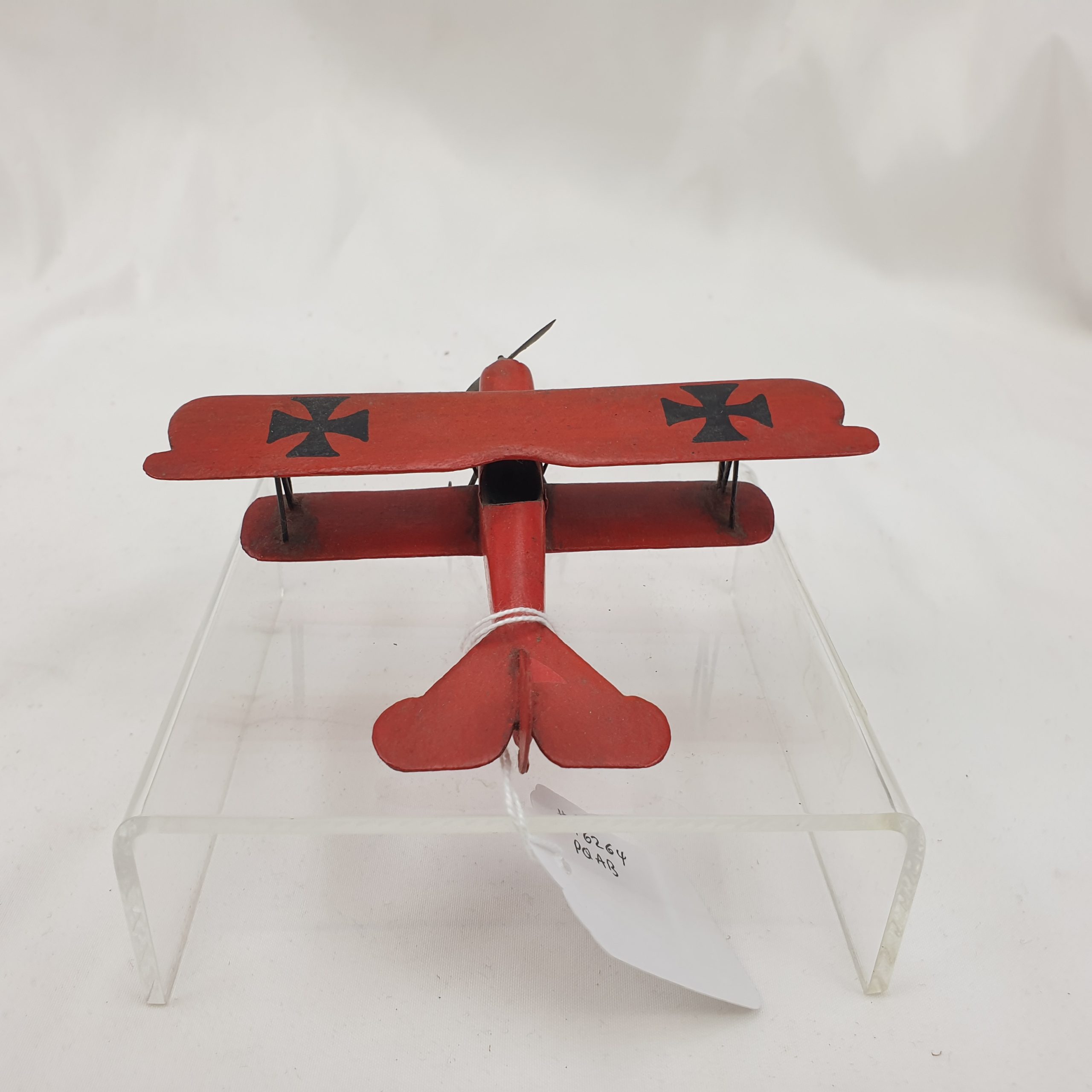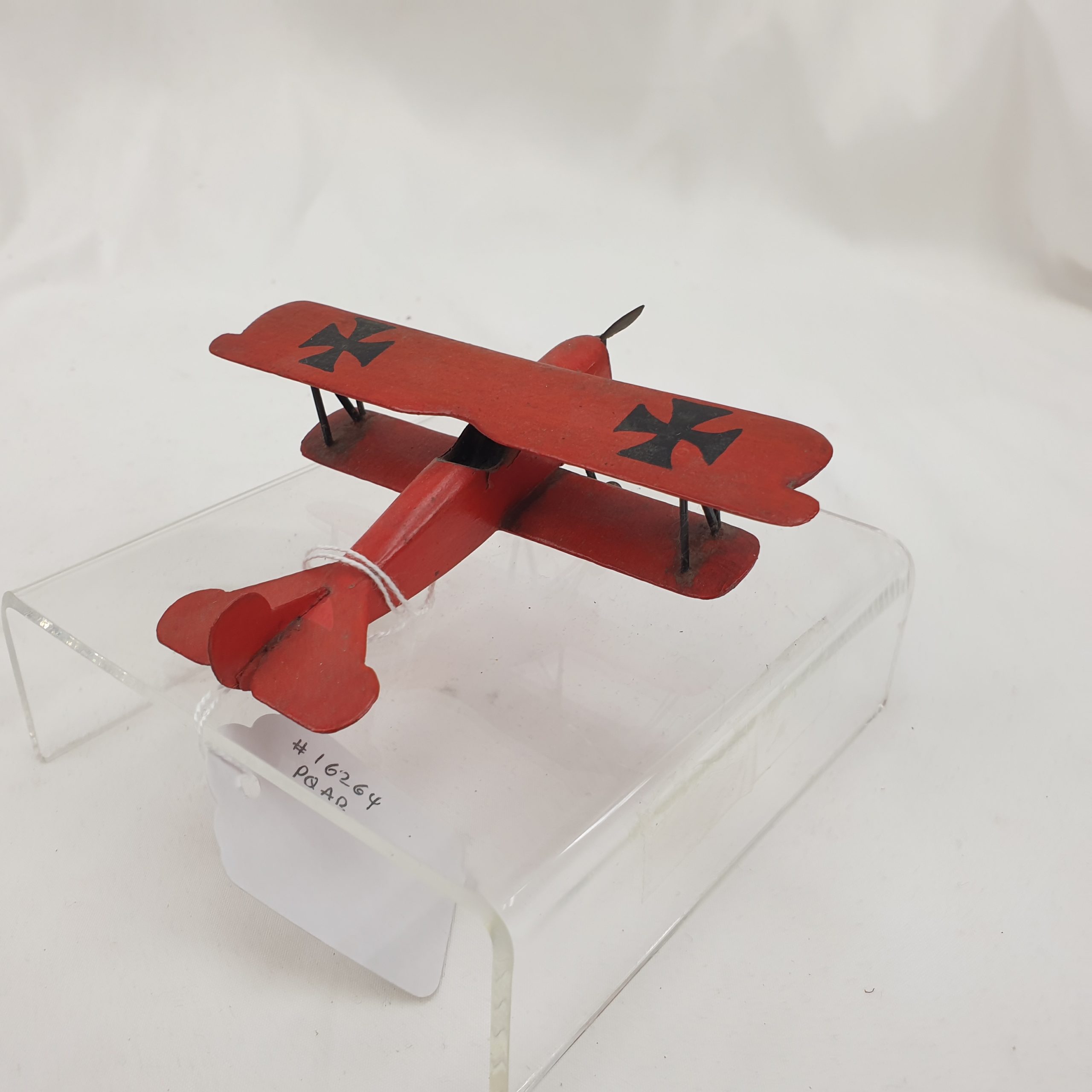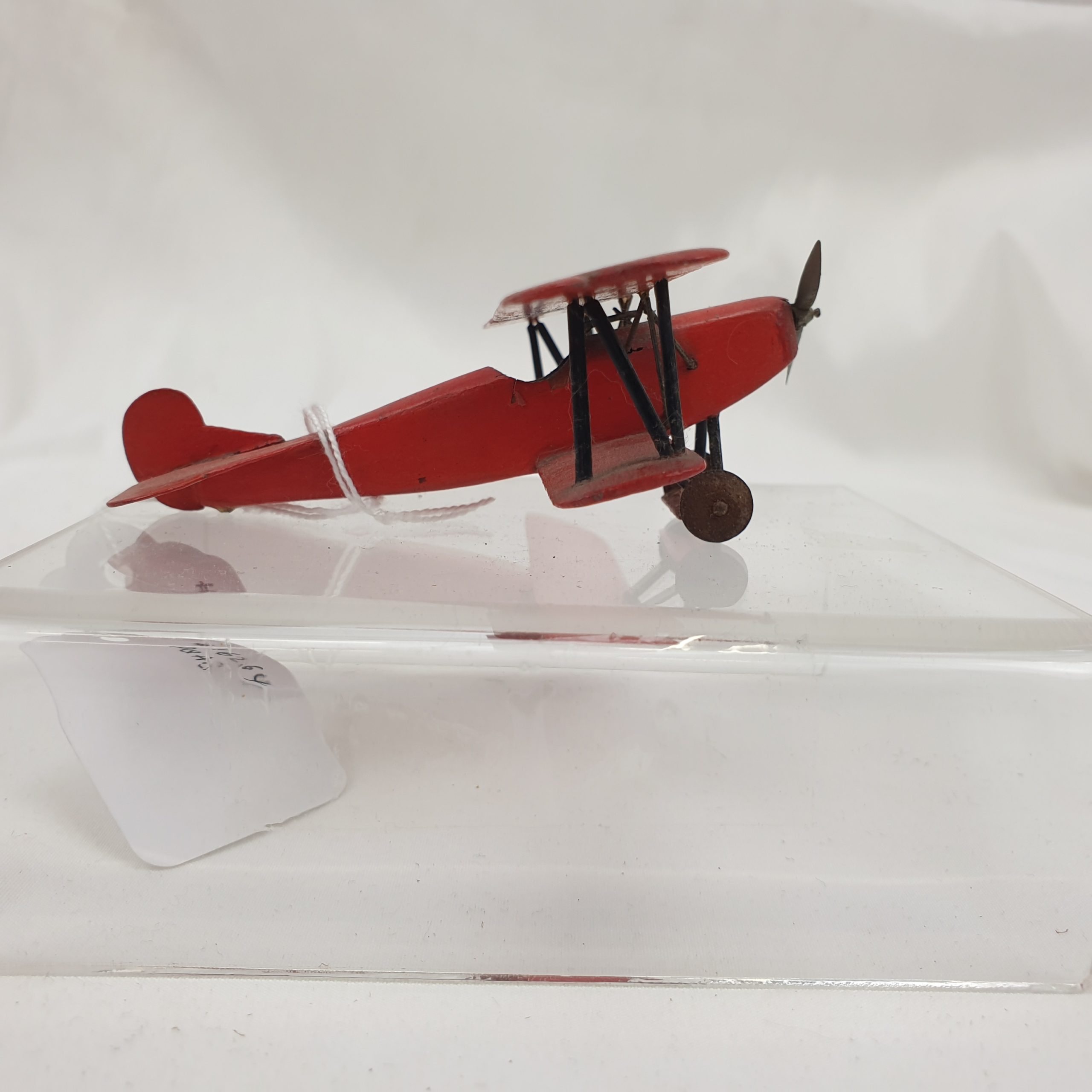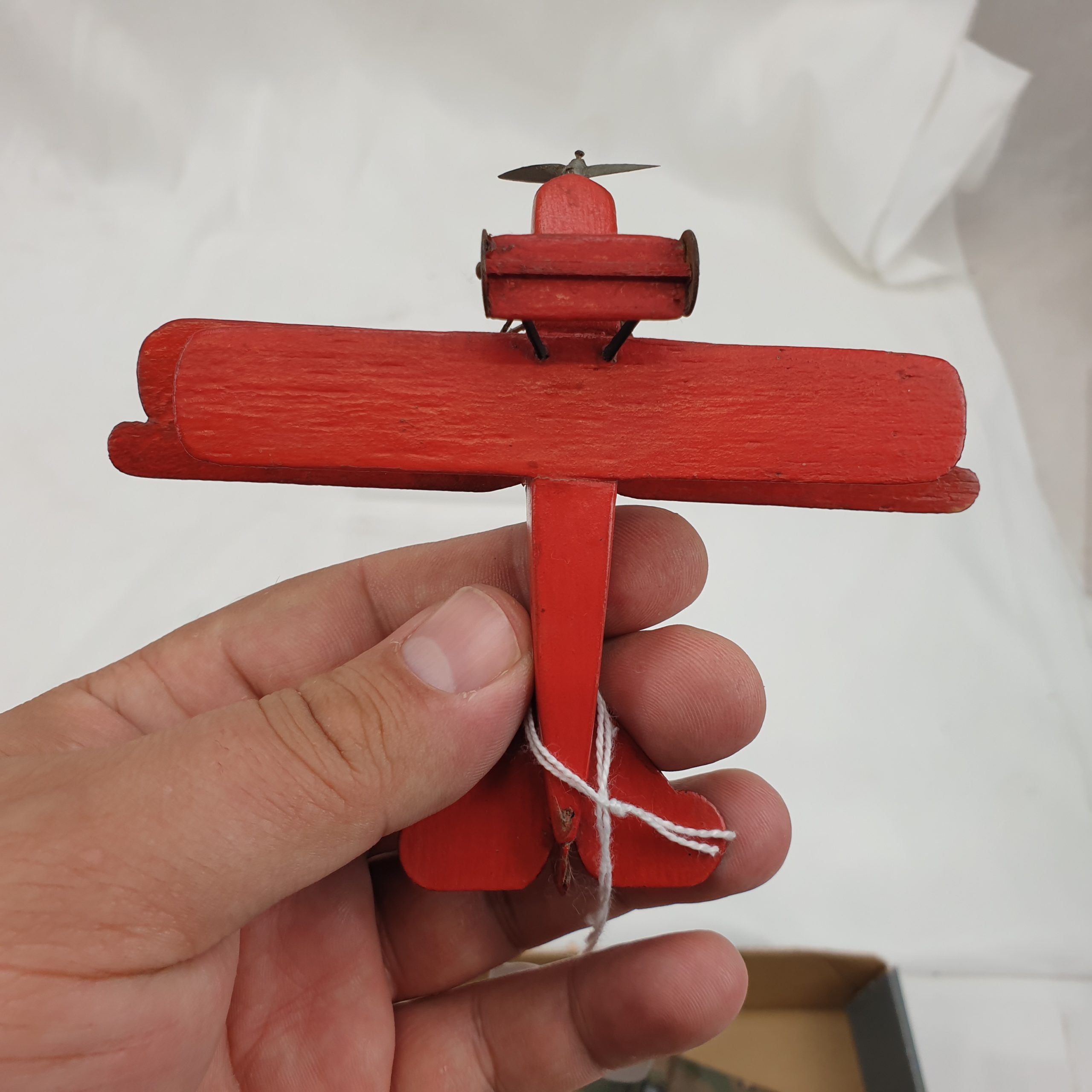~ Model of A German Imperial WW1 Albatross Biplane ~
The Albatros Biplane was a family of German fighter aircraft used during World War I. The Albatros aircraft, particularly the Albatros D.I and its variants, were some of the most famous and successful fighter planes of the war. Here is a brief history of the German Imperial WWI Albatros Biplane, focusing on the Albatros D.I:
Development:
Origins: The Albatros D.I was designed by Robert Thelen at the Albatros Flugzeugwerke during World War I. It was developed to address the shortcomings of earlier Albatros fighters, such as the Albatros C.I and C.II.
Design: The Albatros D.I featured a conventional biplane configuration with a wooden frame covered in fabric. It had a streamlined appearance with a rounded nose and was armed with two synchronized 7.92mm LMG 08/15 “Spandau” machine guns, which were mounted in front of the pilot and fired through the propeller arc using an interrupter gear.
Performance:
Engine: The Albatros D.I was powered by various engines during its production, including the Mercedes D.III inline-six engine. These engines provided the aircraft with good speed and climb rate, making it competitive with Allied aircraft of the time.
Maneuverability: The Albatros D.I was highly maneuverable and could hold its own in dogfights against Allied fighters.
Operational Service:
Role: The Albatros D.I and its variants served as fighter aircraft for the German Air Service (Luftstreitkräfte) during World War I. They engaged in air-to-air combat against enemy aircraft, primarily on the Western Front.
Notable Variants: The Albatros D.II, D.III, and D.V were developed as improved versions of the original D.I. These variants incorporated refinements and addressed issues encountered in combat.
Success: The Albatros D.I and its variants were highly successful in combat and were flown by many German ace pilots, including Manfred von Richthofen, the famous “Red Baron.” The aircraft’s combination of speed, firepower, and maneuverability made it a formidable opponent in aerial combat.
Legacy:
The Albatros D.I and its variants are remembered as some of the most iconic and effective fighter aircraft of World War I. They played a significant role in the early years of aerial warfare and contributed to the reputation of German fighter aviation during the conflict.
However, as World War I progressed, newer Allied aircraft designs emerged with improved performance, leading to the eventual obsolescence of the Albatros fighters. Despite this, their impact on the development of fighter aircraft design and tactics during the war was substantial, and they remain important in the history of aviation.
~ Dimensions ~
The wingspan is 12.5 cm and the length is 10 cm

